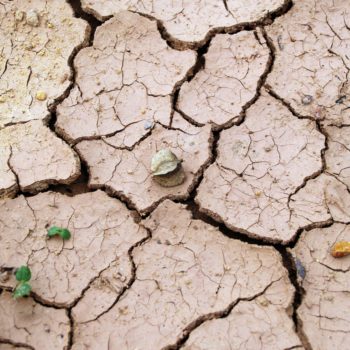
Indoor Growing: Temperature and Humidity
Successfully growing crops indoors requires specific tools, tactics, and techniques. Knowing the best grow room temperature and humidity level is a good start.
Ideal grow room temperature and humidity varies depending on the stage of plant life. Clones require a different temperature and humidity level than vegetative growth and flowering plants have different ideal atmospheric conditions as well. In order to master the art of growing indoors, dialing in the proper environment at the right time remains the most essential ingredient for success. So, what is the best grow room temperature and humidity level?
The Correlation Between Temperature and Humidity
When we have a certain amount of air with a certain temperature, this air can absorp and hold a certain amount of water. This water is present in the air as a gas known as ‘watervapor’. Relative humidity changes when temperatures changes. Because warm air can hold more water vapor than cool air, relative humidity falls when the temperature rises if no moisture is added to the air. This is why water will condensate out of warm air when the air gets in contact with a cold surface (for example a cool mirror in your bathroom). When we talk about relative humidity in % this expresses the amount of watervapor present in the air versus the amount it could hold at that given temperature. Clones have small roots and struggle to provide all the leaves with enough water. This is why clones generally prefer a higher humidity climate and mature plants peform better in a dryer climate. This has to do with the VPD (vapor pressure deficit) which I will talk about in a different post.
Measuring and Changing Temperature and Humidity in Your Room
In order to measure temperature and humidity properly, you’ll need a thermometer and hygrometer. Your best bet is to invest in a digital one that can give you current readouts as well as highs and lows when you’re not inside the room. To raise heat, you’ll need a heater and to lower heat, you’ll need to ventilate the room with cool air by using an exhaust fan, or when dealing with a high amount of heat, an airconditioner. The exhaust fan will need to be controlled by a fan controller to remain a constant climate. These can be outside or inside the growing space depending on the size of your space and how much the temps and moisture levels fluctuate. A humidifier and a dehumidifier can be employed to raise and lower humidity rates. In most cases your room can greatly benefit from a controller that uses a sensor to keep track of temps and humidity and turns on the appropriate appliance to regulate and keep them within your set parameters.
Clone Stage: Optimal Grow Room Temperature and Humidity
Try not to let the temperature rise to tropical values during the first week. Your (small) plants have to work too hard to keep themselves cool. They do this, just like us humans, by evaporating water. Because they have almost no roots yet, they can not supply enough water. Later in bloom, the temperature can safely rise to 25 ° – 30 °C. For your cuttings a good range is 22 – 25 °C. Also make sure the roottemperature stays in the range of 20 – 24°C for optimal development. Now the most important aspect for your clones is to keep your humidity level high in the grow room or your clones will die very fast! Keep the relative humidity in the 70 – 80% range during the day period for the first week after transplanting them in to pots with soil or whatever medium you use. You can use small plastic transparent domes to place over your clones for the first few days to keep the humidity level high and give your clones some time to develop it’s roots. If the clones look healthy and the leaves do not hang down you can remove the domes.

Adjust you climate/fan controller speed to a minimum to avoid ventilating too hard or the growroom becomes very dry and your clones will struggle. This can be an even bigger problem for young plants than too high temperatures. A good humidifier is essential to keep the correct humidity level, especially when you struggle to keep the humidity at 70 – 80% in the first week. Incidentally, cold, but especially drafts and rapid changes in temperature are disastrous for your cuttings. Make sure that the temperature does not drop too much (not below 20°C), especially during the night. It is highly recommended u use a high quality climate/fan controller to control all of these variables.
Vegetative Stage: Optimal Grow Room Temperature and Humidity
The best grow room temperature during the vegetative stage of growth is around 24-28 degrees celsius when the lights are on during the “daytime” and no lower than 18-19 degrees celsius during the “night” or lights off periode with a relative humidity of 45-55%. With these settings, your plants will best be able to convert light into energy for growth. This is the time when the plant puts on leaves and branches and expands it’s root system throughout your growing medium. If it gets too cold or hot, growth stops and you eventually risk losing your plants altogether
To answer this question we will first need to understand that temperature and relative humidity are bounded together. When we have a certain amount of air with a certain temperature, this air can absorp and hold a certain amount of water. This water is present in the air as a gas known as ‘watervapor’. The higher the temperature of this air, the higher the amount of watervapor it can hold. In contrast, how lower the temperature of the air, how lower the amount of watervapor it can hold. This is why water will condensate out of warm air when the air gets in contact with a cold surface (for example a mirror in your bathroom). When we talk about relative humidity in % this expresses the amount of watervapor present in the air versus the amount it could hold at that given temperature. Clones have small roots and struggle to provide all the leaves with enough water. This is why clones prefer a higher humidity level as adults plants.
- Posted by Florentec
- On April 14, 2018
- 0 Comments


0 Comments